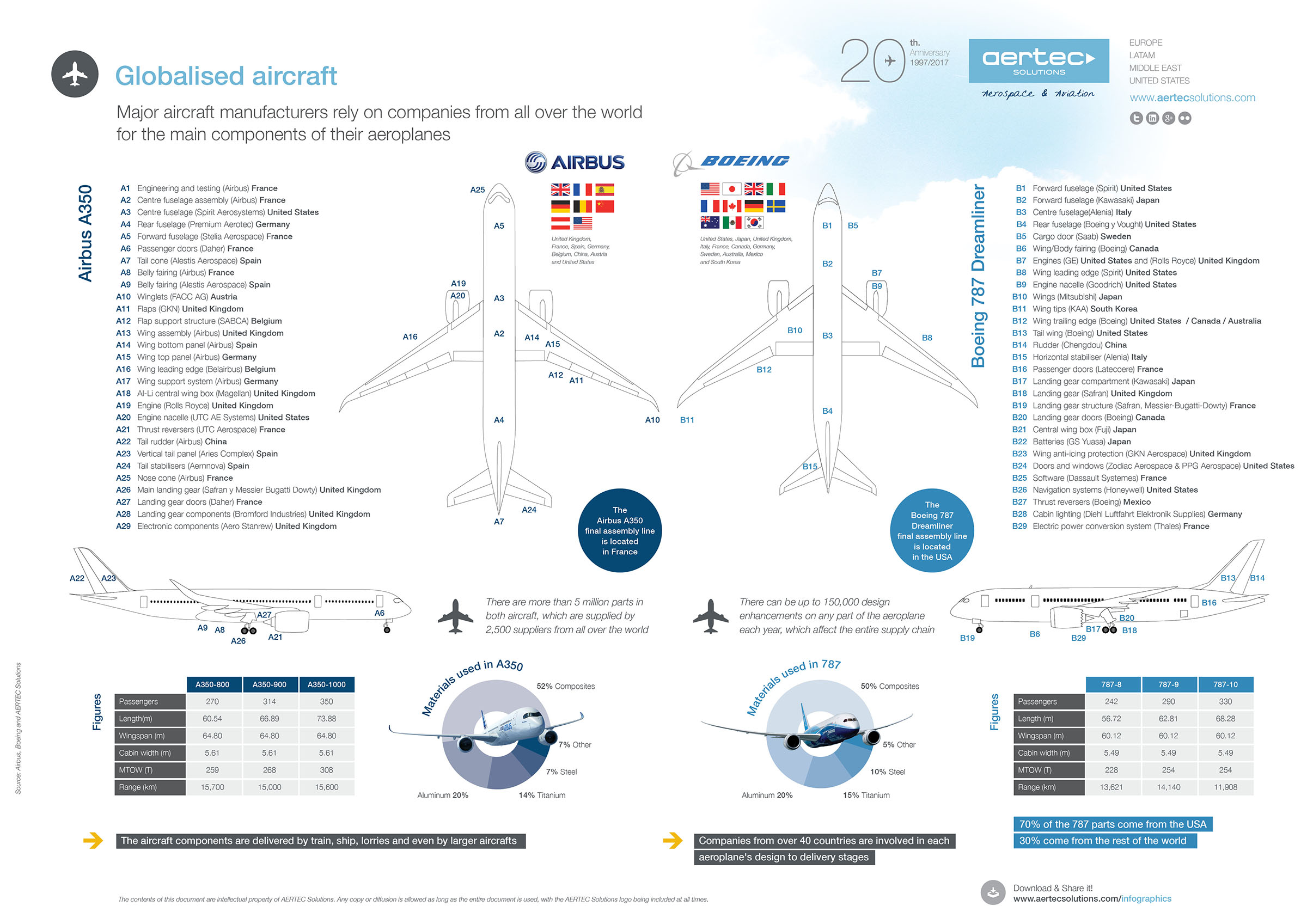
The aerospace industry has a very slow pace of production. It requires a highly-qualified labour force as well as cutting-edge technology which is constantly under development. At the same time, the aircraft which leave the assembly plant each day include thousands of parts that require a high degree of accuracy in so far as their manufacturing and assembly are concerned.
Viewing the entire process of building an aircraft is truly exciting. Each link of the chain is meticulously planned to ensure that each part is in the right place at just the right time so the worker can incorporate it to the future aeroplane. Over time, the major aircraft manufacturers have become their countries’ strategic representatives. Boeing represents the power of US industry while Airbus does the same for the European Union.
On a lesser scale, Bombardier is Canada’s standard bearer and Embraer is Brazil’s. COMAC (Commercial Aircraft Corporation of China), as China’s representative, and UAC (United Aircraft Corporation), at the head of Russian industry, have also joined this technological, industrial and commercial race. Up to a dozen other countries have a significant capability to build aircraft. All of them are outstanding examples of each of these countries’ capabilities and abilities.
Nonetheless, the era of globalisation is not alien to the aerospace industry. Countries which lack the capability to assemble aircraft vie with each other to become parts suppliers for countries which do indeed have this capability and, thus, the production chain branches out significantly. Some aeroplane models can be made up of parts which come from several dozen countries.
We have taken as an example in this infographic two of the most modern aircraft that can be found on the market, the Airbus A350 XWB and the Boeing 787 Dreamliner. We have broken down the origin of some of their sections and parts, but it should not be forgotten that in turn each of these aircraft parts include components which come from many other places in the world.
Both manufacturers’ supply and manufacturing model is subtly different, but what they have in common is the fact that globalisation is present on each of their aircraft. Let’s take a look.
[wpfilebase tag=file id=1109 tpl=aertec-downloads /]
Source: Airbus, Boeing and own work.
The contents of this document are intellectual property of AERTEC Solutions. Any copy or diffusion is allowed as long as it is integrally done to the document and preserves at all times AERTEC Solutions’ trademark.


